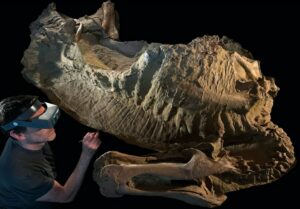Unveiling Europe’s Dark Secrets: 7 Bone-Chilling Truths About Real-Life Vampires
Since Bram Stoker unleashed Dracula upon the world in 1897, vampires have been haunting our imaginations like that relentless email from your boss at 11 PM. But here’s a twist: the fascination with bloodsuckers didn’t begin with Stoker’s pen—it actually stretches way back before twilight sagas and cinematic fangs. What if I told you that real-life vampires, or at least the belief in them, have left their eerie footprints across Eastern Europe and beyond? Curious about medieval vampire graves or wondering if those creepy decomposing bodies were stirring up ghostly gossip? Hang tight—because we’re diving into seven spine-tingling, jaw-dropping facts about vampires that are stranger than fiction… and trust me, they might just bite! LEARN MORE
Since Bram Stoker’s Dracula was published in 1897, vampires have seized the world’s imagination. But traces of real-life vampires—or at least the belief in real-life vampires—predate Stoker’s literary vision. Here are seven fascinating facts about the real vampires of Eastern Europe and beyond.
- There are about 100 medieval vampire graves in Bulgaria.
- Belief in vampires stemmed from the mysteries of decomposition.
- Vampire graves have also been found in Poland.
- Some 18th-century “vampires” might have been infected with rabies.
- Some in rural Romania still believe in vampires.
- Dracula was inspired by a real person.
- Living people identify as vampires today.
There are about 100 medieval vampire graves in Bulgaria.

Beginning in the early 2000s, archaeologists across Bulgaria unearthed skeletons of people believed to be vampires: six skeletons were discovered near Debelt, two were found in Sozopol; and another was uncovered in the ruins of Perperikon near the Greek border. What set these 13th-century skeletons apart were the rods driven through their chests, pinning them to the ground. When people who were considered bad or evil died in medieval Bulgaria, this precaution was taken so that they could not rise from the dead at night and feast on unsuspecting victims. Researchers believe there are around 100 of these vampire graves in Bulgaria.
Belief in vampires stemmed from the mysteries of decomposition.

In 1732, an Austrian medical officer named Johannes Flückinger investigated the death and subsequent crimes of a man named Arnold Paole, who was believed to have risen from his grave to kill dozens of villagers after his own unexpected death. To stop his murderous rampage, the villagers drove a stake through Paole’s heart, which confirmed his undeath—Flückinger reported that the corpse groaned and bled after being stabbed, proving that the body was still alive. Today, it’s clear that Flückinger’s recording illustrates how townspeople used vampire tales to explain the odd behaviors of decomposing bodies.
Decomposition of the human body takes much longer than you might think. Since cold temperatures slow decomposition, a body buried underground during winter could remain intact for weeks or months. It’s also not unusual for a body to bloat or bleed. Eighteenth-century villagers saw blood around the corpses’ mouths, noses, and ears and concluded that the bodies must be leaving their graves at night to feast on the living.
You Might Also Like …
Add Mental Floss as a preferred news source!
Vampire graves have also been found in Poland.

While Dracula has forever linked vampires to Transylvania, a region in modern-day Romania, the bloodsuckers weren’t confined to the Balkans. In Poland, people stuck large rocks under potential vampires’ chins and lay sickles across their bodies to keep them underground. Balkan folklore speculated that unbaptized persons and people considered bad or who died untimely deaths were at risk of returning as vampires. A 2014 study in the journal PLOS ONE suggested that the Polish “vampires” were likely the first victims of a cholera epidemic.
Some 18th-century “vampires” might have been infected with rabies.

In 18th-century Spain, vampires were allegedly spotted killing animals and terrorizing communities at night. The best possible explanation for these “vampire outbreaks,” a Spanish neurologist suggested in 1998, was not supernatural, but medical. He said the symptoms of rabies would account for nearly all vampiric behaviors, including sensitivity to garlic and light (rabies patients are hypersensitive), nocturnal habits (rabies affects the part of the brain that helps regulate sleep cycles), and fatal bites (25 percent of rabies-infected people are known to bite others, and the virus can be transmitted via saliva).
Some in rural Romania still believe in vampires.














